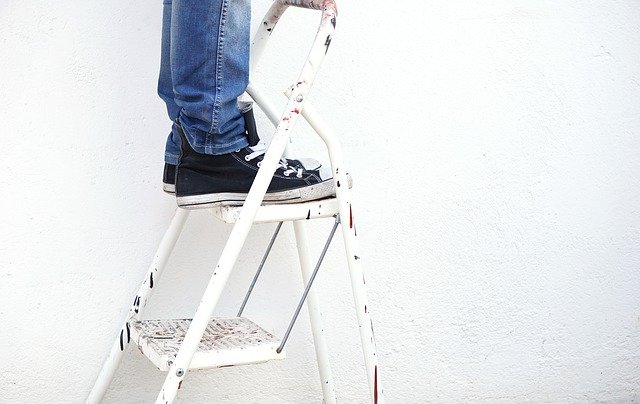
When you're working on a ladder, there are so many different hazards you need to be aware of. In a split second, everything can go from running smoothly to a complete disaster - and it happens all the time. When people don't use ladders properly or don't take the necessary precautions, it leaves them in a vulnerable situation where an accident is likely to occur.
Before you undertake any work on a ladder, it's paramount that you understand the potential dangers and know how to use a ladder safely. Today we're going to look at the biggest causes of ladder accidents, to show you some of the most common ladder accidents that occur. Let's get into it!
You picked the wrong ladder for the job
One of the biggest causes of ladder accidents is incorrect ladder use. This occurs when people purchase one ladder (a step ladder for example), and expect it to be safe to complete every imaginable job that they need to do. Most ladders on the market are designed for a specific use. You will see when you browse our website that we offer ladders for domestic use, professional use, for use around electrical hazards, and even for use on roofs.
We always try to make it clear what a ladder should be used for in our product descriptions so that you can make an educated purchase, however, if you're ever unsure about anything you can always contact us for advice.
If you are looking for a ladder that can support you in a wide range of jobs, our combination ladders are a great option because they can be configured in numerous different ways. We've put together an in-depth ladder-buying guide that you can review if you're unsure what type of ladder you need for a particular job.
Read More: Ladder Buying Guide - What Kind of Ladder Do I Need?
Many ladder accidents occur because people use the wrong ladder for the task at hand. They think that their crusty old extension ladder that's been living in the shed for 10 years will be suitable to complete all manner of jobs, but the reality is, using the wrong type of ladder to complete a job can have serious consequences.
You're working in an unsafe environment
The area in which you are working also plays a key role in your safety. It's vital that you work on even ground and secure your ladder properly before attempting to climb it. People end up injured when they don't properly assess the hazards of an area they're going to work in.
For example, if you're going to be working in an environment where there's an electrical hazard - you should really make allowances for this by purchasing a fibre glass ladder. Similarly, if you're going to be working somewhere that's higher than 6 feet off the ground, you should invest in appropriate PPE such as a helmet & safety harness.
Understanding the work environment and the risks it poses can help you prepare for all eventualities. If you climb your ladder with absolutely no regard for your surroundings, you're asking for an accident to happen. Never climb a ladder unless you're absolutely certain that you can get up, do the job, and get back down safely.
We recently published a blog with some specific advice about working in windy conditions. This is especially useful if you're a tradesperson who often works on-site in all weather. If you'd like to learn more about preparing to work in challenging environments, be sure to give it a read!
Read More: Ladder Safety Tips - Working in Windy Conditions
You didn't use your ladder properly
It's a sad fact that a large number of ladder accidents occur due to human error. Even if you take all the precautions in the world, accidents do happen - and while it's not possible to prevent ALL ladder accidents, you can do yourself a huge favour and learn how to use your ladder properly to reduce the risk.
Just by reading this blog, you are setting yourself up for a safer experience with your ladder. However, certain ladders require a higher degree of training. Roof ladders, for example, should not be used by people with no ladder experience. They need to be deployed and secured carefully, and you need to have the correct fall protection equipment in place to protect you in the event of a fall. Climbing up onto the roof of your home without any prior training is a recipe for disaster.
If you're keen to brush up on your ladder safety skills, you could enroll on a ladder safety course. This will teach you all the necessary skills you need to use ladders safely, including - conducting a risk assessment, understanding the legislation around ladder use, and learning how to carry out proper inspection and maintenance checks.
Learn More: What Does A Ladder Safety Course Involve and Should I Do One?
With all of this in mind, it's fair to say that the main cause of ladder accidents is human error. If you pick the wrong ladder, don't assess your environment, and use it in a way that the manufacturer didn't intend, then you're asking for trouble. If you're looking to buy a high-quality ladder, we have a huge range on offer. Shop all of our ladders below.
Shop All Ladders >














